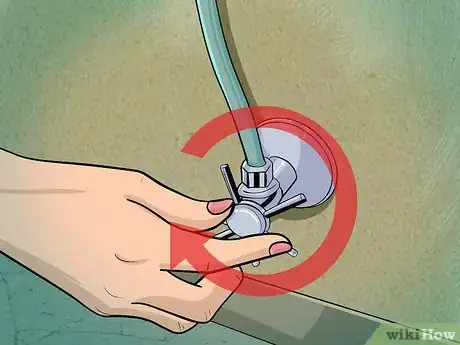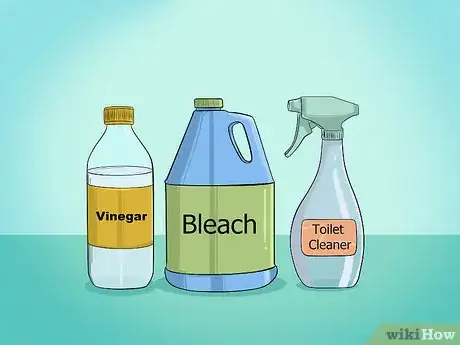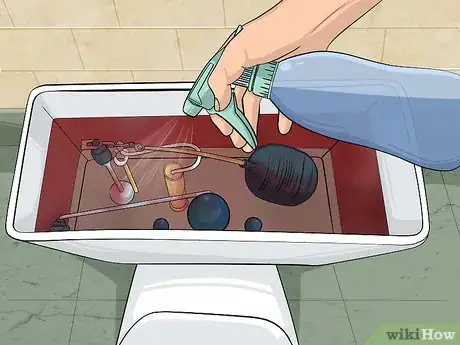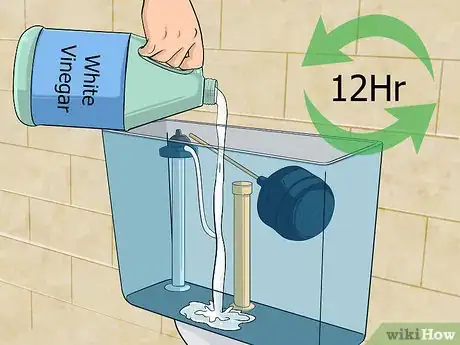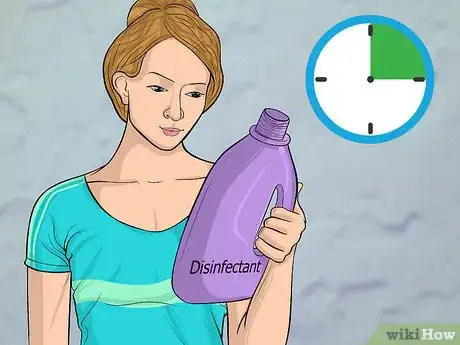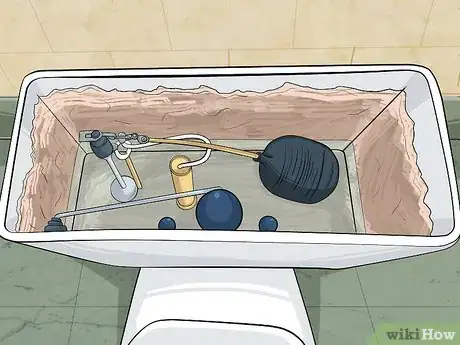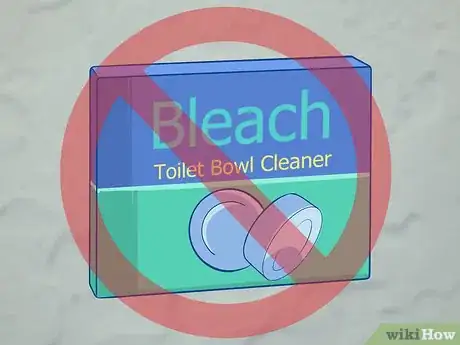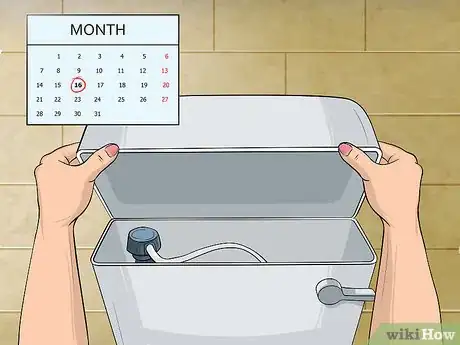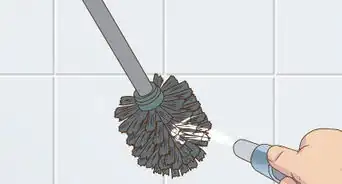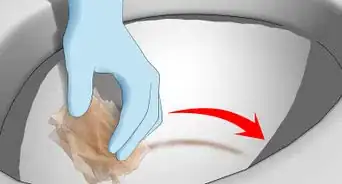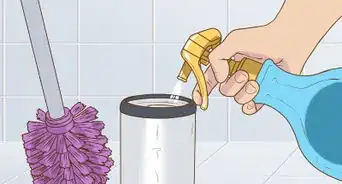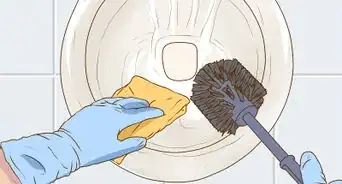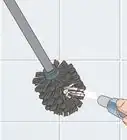This article was co-authored by Michelle Driscoll, MPH. Michelle Driscoll is the Owner of Mulberry Maids, which is based in Fort Collins, Colorado. With five years of experience, her business specializes in cleaning homes and small offices. She holds a Masters in Public Health from the Colorado School of Public Health. Additionally, Mulberry Maids has an A+ rating from the Better Business Bureau.
wikiHow marks an article as reader-approved once it receives enough positive feedback. In this case, 91% of readers who voted found the article helpful, earning it our reader-approved status.
This article has been viewed 143,672 times.
Toilet tanks need periodic cleaning to prevent unwanted odor and the build up of bacteria. Tanks can usually be cleaned with commercial cleaners and a light scrubbing. For very dirty tanks, bleach may be necessary. Clean your tank regularly to keep your toilet clean and your bathroom smelling fresh.
Things You Should Know
- Pour white vinegar into the tank and let it sit for 12 hours to tackle calcium and mildew.
- Scrub the inside of the tank with a scrub brush or old toothbrush to remove tough grime.
- Clean your toilet’s tank at least once a month to prevent foul smells and grime and rust build-up.
Steps
Applying the Cleaner
-
1Drain the tank. To drain the tank, switch off the water. You can find the valve near the wall behind your toilet. Once the water is switched off, flush your toilet. This should drain all the water from the tank.[1]
-
2Determine the proper type of cleaner. Look at how dirty your tank is. If it seems relatively clean, all you need is a basic disinfectant. You can use the same spray you normally use in your bathroom. However, with built up debris, you need something stronger.[2]
- If you notice hardened mineral deposits in the tank, opt for white vinegar.
- If there is a lot of gunk and mildew built up in the tank, clean it with bleach over a commercial cleaner.
Advertisement -
3Apply your cleaner accordingly. With bleach and commercial cleaners, you can spray or pour the cleaners into the tank. Target the bottom and sides of the tank, paying particular attention to areas with built up dirt. Make sure to wear gloves when handling bleach.[3]
-
4Let vinegar sit to treat mineral deposits. When dealing with mineral deposits, the process is slightly different. Pour white vinegar into the tank, up to the top of the overflow tube. Let the vinegar sit for 12 hours before flushing the toilet. After 12 hours have passed, flush the toilet and proceed with regular cleaning.[4]
Scrubbing the Tank
-
1Put on gloves. Toilets and bathrooms in general contain a lot of bacteria. Before cleaning your toilet tank, put on a pair of gloves. Rubber gloves will help protect you from bacteria and germs.[5]
- If you're cleaning with bleach, gloves are vital to protect your skin.
-
2Let your cleaner sit in the tank. Leave your cleaner in the tank for a set amount of time. Most cleaners should be left on for 10 to 15 minutes. However, it's always a good idea to check the specific directions on your cleaner.[6]
- Remember, vinegar should stay on for 12 hours before you proceed to clean the tank.
-
3Scrub your cleaner into the tank. Use a scrub brush, old toothbrush, or scrubby sponge to scrub the cleaner into your tank. Scrub down the sides and bottom of the tank until the toilet bowl smells fresh and you remove any obvious signs of dirt and built up grime.[7]
- Clean the working parts of the tank as well, like the ball float and flapper.[8]
-
4Flush out the tank. Once you've scrubbed the tank down, you can turn the water back on and flush the tank to rinse. If you've used bleach, add 1 gallon (3.8 L) of plain, cold water to the tank and then flush it.[9]
- You may want to wear goggles to protect your eyes when adding water to a tank that had bleach in it.
Cleaning Tricks & Maintenance
-
1Remove mineral deposits periodically. Mineral deposits will eventually build up in any toilet tank. Check your tank once a week and if you notice any deposits, treat the tank with white vinegar. Fill the tank with vinegar, let it sit for 12 hours, then flush and clean the tank.[10]
-
2Be careful with tank tablets. Stores often sell tank tablets, meant to be placed in your tank to help it smelling fresh. However, if you do use tablets, stay away from tablets that contain bleach. These can erode and damage the inside of your tank.[11]
- If you clean your toilet tank regularly, tablets are probably not necessary.
-
3Establish a cleaning routine. Many people remember to clean their toilet regularly, but neglect the toilet tank. Make sure not to fall into this trap. At least once a month, give your toilet tank a good cleaning. This will keep your bathroom smelling clean and fresh.[12]
Community Q&A
-
QuestionWe have a septic system and cannot use strong chemicals. What are my options?
 LojjikCommunity AnswerVinegar is septic safe, and a moderate amount of bleach is safe for your system, too. The bleach will degrade into harmless salty water.
LojjikCommunity AnswerVinegar is septic safe, and a moderate amount of bleach is safe for your system, too. The bleach will degrade into harmless salty water.
References
- ↑ http://www.housecleaningcentral.com/en/cleaning-tips/bathrooms/cleaning-inside-of-toilet-tank.html
- ↑ http://www.housecleaningcentral.com/en/cleaning-tips/bathrooms/cleaning-inside-of-toilet-tank.html
- ↑ http://www.housecleaningcentral.com/en/cleaning-tips/bathrooms/cleaning-inside-of-toilet-tank.html
- ↑ http://www.housecleaningcentral.com/en/cleaning-tips/bathrooms/cleaning-inside-of-toilet-tank.html
- ↑ http://lentheplumber.com/blog/clean-your-toilet-tank/
- ↑ http://www.today.com/home/how-often-you-should-clean-your-toilet-right-way-do-t88536
- ↑ http://www.today.com/home/how-often-you-should-clean-your-toilet-right-way-do-t88536
- ↑ https://www.bobvila.com/articles/how-to-clean-a-toilet-tank/
- ↑ http://www.housecleaningcentral.com/en/cleaning-tips/bathrooms/cleaning-inside-of-toilet-tank.html
About This Article
Before cleaning your toilet tank, switch off the water and drain the tank. Make sure to put on a pair of gloves before you begin so your skin stays protected. To start cleaning, pour the bleach into the tank and allow it to sit for 10-15 minutes. Scrub the sides and bottom of the tank with a brush or strong sponge to remove grime. Once you're finished, add a gallon of cold water to the tank and flush it to rinse out the bleach. For tips on how to remove mineral deposits with vinegar and why you should avoid tank tablets containing bleach, read on!
